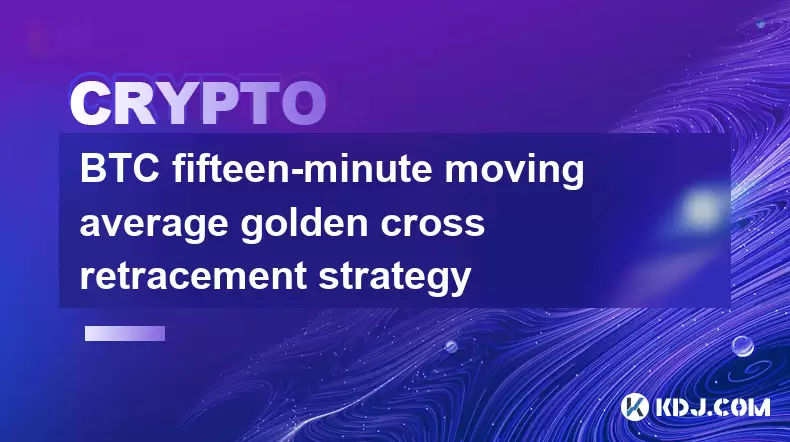-
 Bitcoin
Bitcoin $116600
0.45% -
 Ethereum
Ethereum $3902
1.46% -
 XRP
XRP $3.330
8.48% -
 Tether USDt
Tether USDt $1.000
0.02% -
 BNB
BNB $786.2
1.53% -
 Solana
Solana $176.5
2.61% -
 USDC
USDC $0.9998
0.00% -
 Dogecoin
Dogecoin $0.2219
3.89% -
 TRON
TRON $0.3390
-0.05% -
 Cardano
Cardano $0.7905
3.12% -
 Stellar
Stellar $0.4595
11.06% -
 Hyperliquid
Hyperliquid $41.14
5.28% -
 Sui
Sui $3.803
2.17% -
 Chainlink
Chainlink $19.28
11.13% -
 Bitcoin Cash
Bitcoin Cash $579.0
0.94% -
 Hedera
Hedera $0.2604
3.41% -
 Avalanche
Avalanche $23.30
2.76% -
 Ethena USDe
Ethena USDe $1.001
-0.03% -
 Litecoin
Litecoin $121.7
1.10% -
 UNUS SED LEO
UNUS SED LEO $8.983
0.36% -
 Toncoin
Toncoin $3.342
0.92% -
 Shiba Inu
Shiba Inu $0.00001287
1.98% -
 Uniswap
Uniswap $10.53
3.87% -
 Polkadot
Polkadot $3.882
2.79% -
 Dai
Dai $1.000
0.00% -
 Bitget Token
Bitget Token $4.471
1.77% -
 Cronos
Cronos $0.1517
2.88% -
 Monero
Monero $263.4
-4.80% -
 Pepe
Pepe $0.00001109
2.63% -
 Aave
Aave $282.5
2.95%
BTC fifteen-minute moving average golden cross retracement strategy
The BTC fifteen-minute moving average golden cross retracement strategy uses EMA, SMA, and Fibonacci levels to identify entry points for short-term Bitcoin trades.
May 31, 2025 at 08:01 am

The BTC fifteen-minute moving average golden cross retracement strategy is a popular approach among cryptocurrency traders who aim to capitalize on short-term price movements of Bitcoin. This strategy involves identifying potential entry and exit points using moving averages and retracement levels, which can be particularly effective in the volatile crypto market. In this article, we will explore the components of this strategy, how to set it up, and how to execute trades based on these signals.
Understanding the Fifteen-Minute Moving Average
The fifteen-minute moving average is a technical indicator that smooths out price data by creating a constantly updated average price over a fifteen-minute period. This moving average helps traders identify the general direction of the market and potential trend reversals. There are two types of moving averages commonly used in this strategy: the Simple Moving Average (SMA) and the Exponential Moving Average (EMA). The SMA gives equal weight to all prices in the period, while the EMA places more emphasis on recent prices, making it more responsive to new information.
The Golden Cross in the BTC Market
A golden cross occurs when a shorter-term moving average crosses above a longer-term moving average, signaling a potential bullish trend. In the context of the fifteen-minute moving average strategy, a golden cross is typically identified when the 15-minute EMA crosses above the 50-minute SMA. This crossover suggests that the short-term momentum is strong enough to potentially overcome the longer-term trend, indicating a good time to enter a long position.
Identifying Retracement Levels
Retracement levels are used to identify potential areas where the price of Bitcoin might pull back before continuing in the direction of the trend. The most commonly used retracement levels are based on the Fibonacci sequence, which includes levels at 23.6%, 38.2%, 50%, 61.8%, and 78.6%. In the fifteen-minute moving average golden cross retracement strategy, traders often look for retracements to the 38.2% or 50% Fibonacci levels as potential entry points after a golden cross has occurred.
Setting Up the Strategy
To set up the fifteen-minute moving average golden cross retracement strategy, traders need to follow these steps:
- Choose a reliable trading platform that supports Bitcoin trading and offers technical analysis tools.
- Add the 15-minute EMA and 50-minute SMA to the chart. Most trading platforms allow you to customize the time periods for these indicators.
- Enable Fibonacci retracement levels on the chart. This can usually be done by selecting the tool from the platform's drawing tools menu.
- Monitor the Bitcoin price chart for a golden cross, where the 15-minute EMA crosses above the 50-minute SMA.
Executing Trades Based on the Strategy
Once the golden cross has been identified, traders should wait for a retracement to one of the Fibonacci levels before entering a trade. Here's how to execute a trade based on this strategy:
- Identify the golden cross on the fifteen-minute chart. This is your signal that a potential bullish trend is developing.
- Wait for a retracement to the 38.2% or 50% Fibonacci level. This is where you will look to enter a long position.
- Place a buy order at the retracement level. Set a stop-loss order just below the recent swing low to manage risk.
- Set a take-profit order at a level that represents a reasonable profit target, based on the recent price action and volatility.
Managing Risk and Position Sizing
Risk management is crucial when trading any strategy, including the fifteen-minute moving average golden cross retracement strategy. Traders should never risk more than a small percentage of their trading capital on any single trade. A common rule of thumb is to risk no more than 1-2% of your trading capital on each trade. Position sizing should be adjusted based on the distance between the entry point and the stop-loss level to ensure that the risk per trade remains within the trader's risk tolerance.
Monitoring and Adjusting the Strategy
The cryptocurrency market is highly volatile, and conditions can change rapidly. Traders using the fifteen-minute moving average golden cross retracement strategy should continuously monitor their trades and be prepared to adjust their positions as needed. This may involve moving the stop-loss to break even once the trade moves in their favor, or taking partial profits if the price reaches certain levels.
Frequently Asked Questions
Q: Can this strategy be used for other cryptocurrencies besides Bitcoin?
A: Yes, the fifteen-minute moving average golden cross retracement strategy can be applied to other cryptocurrencies. However, each cryptocurrency may have different levels of volatility and liquidity, so traders should adjust their risk management and position sizing accordingly.
Q: How do I know if a golden cross is a false signal?
A: False signals can occur in any trading strategy. To minimize the risk of acting on a false signal, traders should look for confirmation from other indicators, such as volume or additional moving averages. Additionally, waiting for a retracement to a Fibonacci level before entering a trade can help filter out false signals.
Q: What time frame is best for the golden cross strategy?
A: The fifteen-minute time frame is used in this strategy because it offers a balance between short-term price movements and longer-term trends. However, traders can experiment with different time frames, such as 5-minute or 30-minute charts, to see which works best for their trading style and risk tolerance.
Q: Should I use the EMA or SMA for the golden cross?
A: Both the EMA and SMA can be used for the golden cross strategy. The EMA is more responsive to recent price changes, which can be beneficial in the fast-moving crypto market. However, some traders prefer the SMA for its simplicity and less frequent signals. Ultimately, the choice between EMA and SMA depends on the trader's preference and trading style.
Disclaimer:info@kdj.com
The information provided is not trading advice. kdj.com does not assume any responsibility for any investments made based on the information provided in this article. Cryptocurrencies are highly volatile and it is highly recommended that you invest with caution after thorough research!
If you believe that the content used on this website infringes your copyright, please contact us immediately (info@kdj.com) and we will delete it promptly.
- Bitcoin in 2025: The Impossibility of Ownership?
- 2025-08-08 20:30:12
- ZORA's Ascent: Trading Volume Surges, Price Targets in Sight
- 2025-08-08 20:30:12
- Solana, Rollblock, and Crypto Gaming: Charting the Trends in 2025
- 2025-08-08 19:50:11
- BlockchainFX: The Crypto Presale Investors Can't Ignore
- 2025-08-08 19:10:12
- Pump.fun, Memecoins, Glass Full: Solana's Launchpad Wars Heat Up!
- 2025-08-08 18:50:12
- Crypto Market Heats Up: Altcoin Spree Drives Market Cap to $3.87T
- 2025-08-08 19:05:02
Related knowledge

Can the Bitcoin protocol be changed?
Aug 07,2025 at 01:16pm
Understanding the Bitcoin ProtocolThe Bitcoin protocol is the foundational set of rules that govern how the Bitcoin network operates. It defines every...

How are Bitcoin transactions verified?
Aug 08,2025 at 06:57am
Understanding Bitcoin Transaction VerificationBitcoin transactions are verified through a decentralized network of nodes and miners that ensure the le...

How does decentralization make Bitcoin secure?
Aug 08,2025 at 09:35am
Understanding Decentralization in BitcoinDecentralization is a foundational principle of Bitcoin's architecture and plays a critical role in its secur...

What are some common misconceptions about Bitcoin?
Aug 07,2025 at 07:22pm
Bitcoin is Just Like Regular MoneyA widespread misconception is that Bitcoin functions identically to traditional fiat currencies like the US dollar o...

What is the role of nodes in the Bitcoin network?
Aug 08,2025 at 04:14pm
Understanding the Function of Nodes in the Bitcoin NetworkNodes are fundamental components of the Bitcoin network, serving as the backbone that ensure...

Is Bitcoin a solution for inflation?
Aug 08,2025 at 04:57am
Understanding Inflation and Its Impact on Traditional CurrenciesInflation refers to the sustained increase in the price of goods and services over tim...

Can the Bitcoin protocol be changed?
Aug 07,2025 at 01:16pm
Understanding the Bitcoin ProtocolThe Bitcoin protocol is the foundational set of rules that govern how the Bitcoin network operates. It defines every...

How are Bitcoin transactions verified?
Aug 08,2025 at 06:57am
Understanding Bitcoin Transaction VerificationBitcoin transactions are verified through a decentralized network of nodes and miners that ensure the le...

How does decentralization make Bitcoin secure?
Aug 08,2025 at 09:35am
Understanding Decentralization in BitcoinDecentralization is a foundational principle of Bitcoin's architecture and plays a critical role in its secur...

What are some common misconceptions about Bitcoin?
Aug 07,2025 at 07:22pm
Bitcoin is Just Like Regular MoneyA widespread misconception is that Bitcoin functions identically to traditional fiat currencies like the US dollar o...

What is the role of nodes in the Bitcoin network?
Aug 08,2025 at 04:14pm
Understanding the Function of Nodes in the Bitcoin NetworkNodes are fundamental components of the Bitcoin network, serving as the backbone that ensure...

Is Bitcoin a solution for inflation?
Aug 08,2025 at 04:57am
Understanding Inflation and Its Impact on Traditional CurrenciesInflation refers to the sustained increase in the price of goods and services over tim...
See all articles

























































































